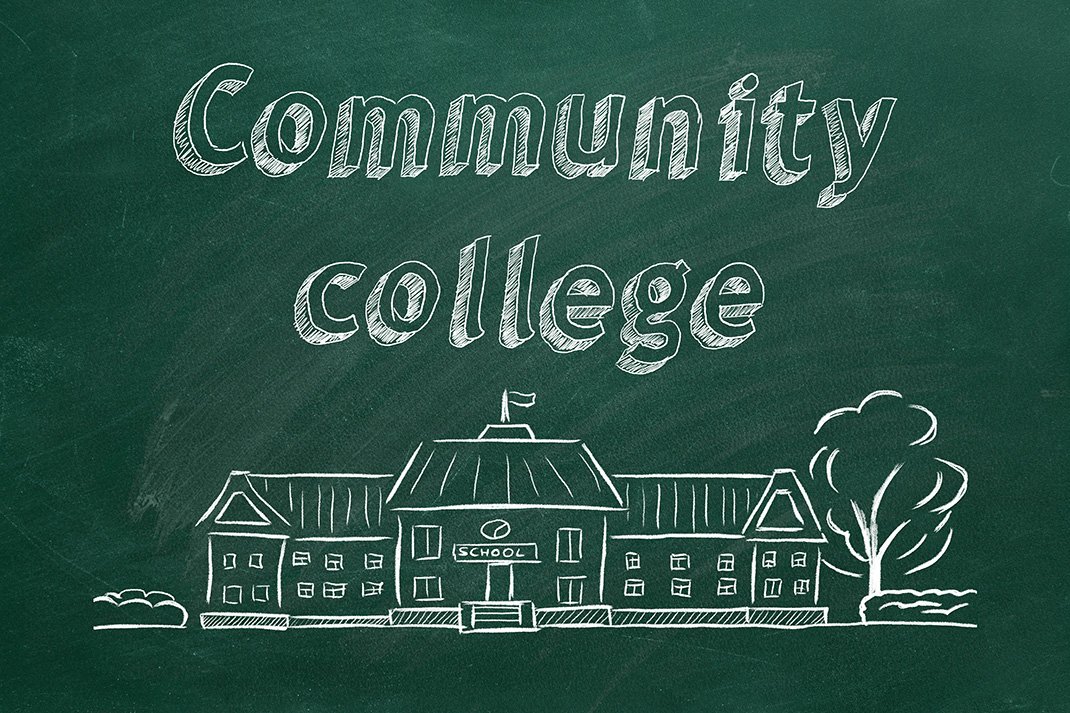New programs, partnerships and courses are helping them reverse the trend
By Aaron Gifford

Post-secondary education enrollment began a steady decline around 2010, largely because of lower birth rates. COVID-19 only made the situation worse.
Community colleges, which have a larger share of part-time and non-traditional students, suffered a particularly severe blow from the pandemic.
Enrollment at those institutions decreased from about 11 million in 2010 to 6.7 million in 2022, according to the National Center for Education Statistics.
Central New York was no exception: Enrollment at Onondaga Community College decreased from 13,018 in 2012 to 8,112 in 2023.
During the same time period, Herkimer Community College enrollment decreased from 3,643 to 1,863 and Tompkins Cortland Community College enrollment decreased from 5,450 to 4,720.
Cayuga Community College survived a 36% drop in enrollment within five years, from 2,623 in 2018 to 1,678 in 2022, before rebounding to 3,451 a year later.

The Community College Research Center reported that the traditional two-year public higher education institutions enjoyed a spike of about one million additional students following the Great Recession of 2008; Americans who were laid off returned to finish their degrees or pursued training for new vocations.
The post-recession increase was short-lived. After COVID-19, high wages for nonskilled positions and jobs in retail and even fast food lured potential students into the labor force instead.
But unlike traditional residential four-year schools, which include many small liberal arts institutions across the nation that are struggling financially, community colleges have a clear path to success.
Career and technical education is one of the few bipartisan issues gaining attention in Washington, D.C.
Federal lawmakers on both sides of the aisle are outlining policies and proposed laws to strengthen workforce partnerships between community colleges and major employers. There’s also interest in expanding federal Pell grants to cover shorter-term certificate programs.
“It’s nice to know there are important things we still agree on,” Mary Alice McCarthy, founder and senior director of New America Center on Education and Labor, told a Senate committee on Feb. 12.
“You never hear complaints about overspending on community colleges,” she said. “There’s no better deal in post-secondary education than community colleges. There’s also less risk.”
Tuition and fees at State University of New York community colleges vary slightly by campus, but most are less than $7,000 per year. Hundreds of thousands of students across the Empire State qualify for the Excelsior Scholarship, which covers full SUNY tuition.
Although it may be too soon to tell whether community colleges in all parts of the country will thrive again someday, NCES has identified a 4.4% enrollment increase nationally.
A look at what some CNY schools are doing

In the past five years, Onondaga Community College has increased course offerings in health care and advanced manufacturing programs.
The new electromechanical technology department offers both associate degree and shorter-term certificate programs. In the health care major, students can earn stackable credentials to work as certified surgical technicians or nurse’s aides. It also has certified training for emergency medical technicians, said OCC provost and vice president Anastasia Urtz.
“We’ve developed a lot of new opportunities,” she said.
About 3,000 local high school students currently participate in dual-enrollment programs where they will also earn OCC credits before graduating from high school and presumably many of them will continue their education at OCC after they get their diplomas, Urtz said.
Micron, which plans to build a massive computer chip plant in Clay, is partnering with OCC for workforce development programs. In addition to those advanced manufacturing programs, the college is anticipating strong enrollment growth in construction management, supply chain management, robotics and cybersecurity, Urtz said.
Even though the school’s future is now heavily focused on more technical programs, OCC still maintains a number of programs in the humanities, which typically attract full-time students focused on earning an associate’s degree there before continuing on to a bachelor’s degree program at a four-year school.
“We didn’t have to take many things off the books, Urtz said, adding that some programs, including architecture, were restructured to focus less on the arts and more on technology.
“And we have many people who take one course at a time,” she said. “The nontraditional student population has rebounded.”
OCC has also attracted international students who want to play college sports. The men’s soccer team, for example, has players from England, Ireland and Saint Lucia. The men’s lacrosse team has a player from Japan.
Herkimer Community College’s enrollment increased by 5.3% after seven years of decline, said Rebecca Ruffing, marketing and communications director.
“Herkimer is committed to accessibility and affordability for families. Tuition, fees, and housing rates have stayed level for four consecutive years,” she said.
HCC added new degree programs for esports management and competitive analytics. The list of additional certificate offerings includes logistics management, digital content and media production, Ruffing said.
The esports program is a major investment. HCC also added a competitive esports team, which currently has 27 members and built a gaming arena for collegiate and high school competitions.
Ruffing said HCC strengthened its partnership with the nearby SUNY Polytechnic Institute in Utica by creating a “Path to Poly” deal-admission agreement and opening a satellite office for that school on the Herkimer campus.
The school is also focusing on several initiatives to eliminate opportunity gaps and improve student retention. As part of the SUNY ASAP program, whose membership increased from 54 students in the spring to 150 this past fall, there’s enhanced academic support, mentorship opportunities and more financial aid help.
HCC enhanced its career planning functions by including the career coach tool on its website. The tool allows users to access real-time market data and find employers looking for skills specific to the school’s programs.
“This tool will assist prospective and current students with access to data to make well-informed decisions about their education and career advancement,” Ruffing said.
Like OCC, Herkimer has dual-credit programs with local high schools and is also attracting an increasing number of international students interested in college sports.
For facilities, the school has invested $25 million in renovations to some classroom buildings and athletic facilities, as well as campus roadways and parking lots. Ruffing said the school is also anticipating a $10 million grant to build a new HVAC laboratory within the village of Herkimer as part of New York state’s Downtown Revitalization Initiative.
Tompkins Cortland Community College is targeting more adult learners under its recent strategic enrollment plan.
This includes adding more offerings to the school’s nursing program to meet the growing needs for health care professionals in the region and adding more financial assistance and support services to nontraditional students who are returning to college after a hiatus of five years or more, said Robert Palmieri, vice president for enrollment management.
In addition, TC3 added electrical engineering and civil engineering courses to its applied sciences and technology program.
“This program leads to high-paying, in-demand jobs in the region,” Palmieri said, adding that about 50% of the applicants for the fall 2025 semester indicated that they would be first-generation college students.
TC3’s new career pathways tool on its website allows users to connect with potential employers and identify four-year college programs that might be a good fit for those who want to continue their education.
“Each program and certificate help answer the questions: What can I do with this degree? How much money can I expect to make? Who is hiring in the region?” Palmieri said.
TC3 also offers stackable credentials where students can earn industry recognized certificates or micro credentials required for certain jobs while also working toward an associate’s degree at their own pace.
Popular micro-credential offerings include clinical medical assistance, micro-nano fabrication safety and geotechnical lab technician, Palmieri said.
New Programs at Cayuga Bolstering Enrollment
At Cayuga Community College, a series of new programs for the 2024-2025 academic year has resulted in increased enrollment, said Andrew Poole, the school’s director of public relations and institutional communications.
This semester, CCC is rolling out its regional police academy in Oswego County. The program was developed in collaboration with several local law enforcement agencies and is expected to address public safety workforce shortages in the years to come.
The college also opened its Advanced Manufacturing Institute on the Fulton campus, another project that involved collaboration with local industrial leaders. Two new micro-credential courses of study have been added as part of that initiation: electro-mechanical system fundamentals (noncredit) and machining functions (credit), Poole said.
Several capital projects were completed on the main campus in Auburn, including the Workforce Development Center in January. A number of agencies, including Cayuga Works, the NYS Department of Labor, and Cornell Cooperative Extension, are providing workforce development and career-related services to CCC students.
The college is also enjoying an enrollment hike through partnerships with Fulton, Hannibal, and Mexico high schools, where students can earn CCC credits in health sciences or information technology.
The new Early College Pathways program is wrapping up its first year, providing guidance to local high school students interested in completing multiple college-level courses before they earn their diploma, so they remain on track to earn an associate’s degree at CCC in one year, Poole said.
“These pathways also illustrate career and transfer possibilities, so students and their families can clearly see the possibilities after graduating from Cayuga,” he said.
New academic programs include human services and culinary arts, and major changes were made to the existing criminal justice program to include concentrations in homeland security or law enforcement that complement the new regional police academy, Poole said.



